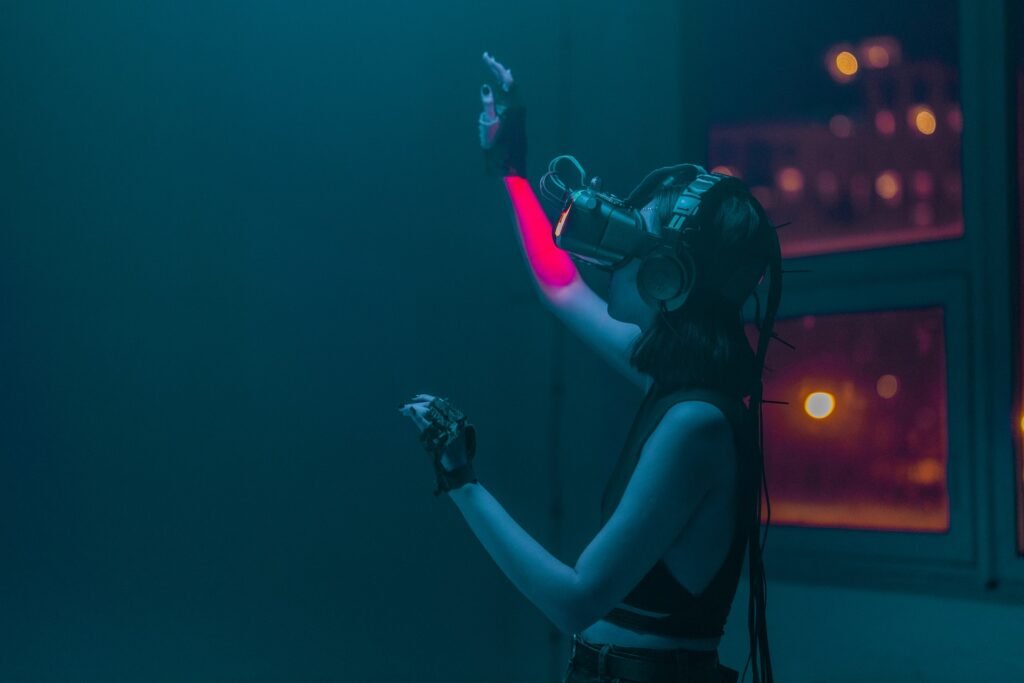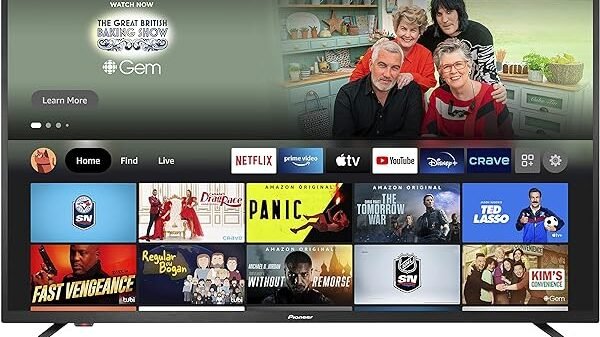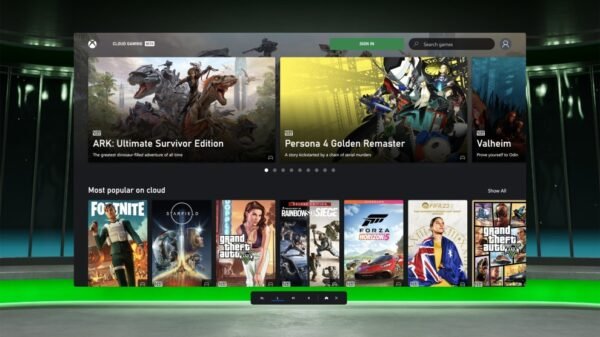Virtual Reality Trends 2023
Key takeaways
- Retail businesses may train their staff for digitally produced real-life events by using VR technology.
- When used in education, virtual reality technology improves training scores by 20%.
- Students may virtually experience the concepts they are learning in class thanks to a number of VR firms.
- For use in military and pilot training facilities, VR technology creates simulations.
- In the retail industry, there will be 31.5 million VR users by 2025.
- The majority of store owners continue to struggle with the expense of VR technology.
Virtual reality (VR) is becoming used for more than just entertainment and games. The most recent virtual reality trends demonstrate how the technology is being used in a variety of sectors, including commercial institutions, healthcare, education, entertainment, and tourism. But more crucially, major firms in the market are still looking at methods to capitalise on the enormous potential of Virtual Reality technology, particularly in the marketing sector.
Virtual Reality technology aids in corporate operations improvement. To complete duties, field workers may digitally experience realistic circumstances. Meanwhile, consumers get to enjoy entertainment on a new level and have access to more reliable information for product evaluations. If you work in business in any capacity, it goes without saying that you cannot afford to be ignorant of what is going on in this area. The usage of virtual reality in gaming, corporate learning management systems, travel, and retail are all covered in this article, along with how this particular sector is expected to change in the future in light of the COVID-19 pandemic’s disruptions.
Some nations are progressively embracing the commercial possibilities that VR technology offers. However, a number of barriers are preventing the widespread implementation of VR technology (YouGov, 2019). The main barrier to employing virtual reality goods, according to many, is the user experience because of persistent worries about performance problems and technological constraints.
Market trends for virtual reality in particular numbers demonstrate that the field of technology has not yet matured. Many organisations are reluctant to completely commit to VR technology because of issues with prices, accessibility, and safety. The newest developments in virtual reality, however, continue to have the potential to transform numerous sectors.
In 2019, there will be around 42.9 million VR users in the US. This is equivalent to around 13% of all Americans. The market for VR gear and software was estimated to be worth $2.6 billion globally in 2020. By 2023, it is expected to reach $5.1 billion (SuperData, 2020). These numbers indicate that virtual reality has a bright future for both enterprises and consumers (The Boss Magazine). We’ll examine this technology’s present state in greater depth in the sections that follow.
- Virtual reality in retail

Photo: Vanessa Loring
Some companies have begun integrating virtual reality (VR) into their training programs. For example, in the retail industry, VR technology enables personnel to completely immerse themselves into a virtual world where they must manage lengthy lines or a crowded store. As a result, there is no longer a need to interrupt normal company activities to teach the whole workforce.
This strategy was used by Walmart to have staff members ready for Black Friday customers. The business has teamed up with virtual reality (VR) pioneer Stivr, which has used VR to assist NFL players practise. Walmart put its staff members through a simulated version of real-world situations. Then, depending on what they saw in the scenarios provided by the computer-generated vision, the employees were asked to make decisions.
The purpose of virtual reality training is to map scenarios and have staff members ready for circumstances like the rush of the holidays or resolving unforeseen problems that are common in the retail industry. According to eMarketer, by 2020, there are 57.4 million VR users in the US overall, 9.5 million of whom work in the retail industry. However, according to research, 31.5 million people will utilise VR overall in the retail industry by 2025 (Statista, 2016).
Virtual reality will also be utilised to enhance and expedite consumers’ online shopping experiences in addition to teaching store workers. While virtual fitting rooms driven by augmented reality (AR) have been available for a while, VR is expected to disrupt the market by enabling virtual storefronts (PYMNTS, 2019).
The expense of VR technology is a hurdle for the retail industry. Whether or if such technology will be advantageous to organisations will depend on how budgeting software platforms are used. As a tactic, company owners are restricting the amount of attendees who may utilise virtual reality (VR) headphones, with the remainder viewing on a flat-screen display.
- Virtual Reality for distance learning

Photo: Julia M Cameron
One industry that is projected to use immersive technology, such as educational management systems and VR, is education (Perkins Coie, 2020). According to Koch’s website, the integration of VR technology into the classroom led to up to 20% increases in training score between the pre- and post-test. Learning is made more enjoyable and engaging with the use of virtual reality technology in the classroom, giving students something to anticipate in class. Additionally, the usage of VR may even increase given that the education sector is one of those most impacted by the COVID-19 epidemic, as it allows students to experience their teachings firsthand without having to be in a face-to-face classroom.
With the help of Google Expeditions, kids may now supplement their history lectures with a virtual trip to the Louvre museum. They can even interact with dinosaurs and climb Mount Everest. The majority of VR developers in the education industry, including Discovery Education, the top manufacturer of virtual reality field excursions, likewise have these three industries as their primary areas of interest.
Additionally, virtual reality is proven to be very helpful in pilot and military training. Young troops and pilot training institutes have been receiving instruction in the form of VR simulators for a number of years. The greatest eLearning tools and technologies aid troops in preparing for unforeseen circumstances in the field.
- Native advertising using VR

Photo: Erin Le
Another industry where immersive technology, like VR, is anticipated to see exponential growth is advertising (Perkins Coie, 2020). Soon, developers will be able to include branded placements into virtual experiences thanks to further developments in VR technology. In-game advertisements were the first form of this kind of native advertising. VR experiences will soon be able to include native advertising that is demographically appropriate to specific customers as VR technology advances.
Future developments in virtual reality hint to advertising and marketing in the VR environment. As businesses collaborate with content creators, they may create fantastic VR experiences that feature their goods prominently. For instance, the ad-tech firm Immersv received roughly $10.5 million for virtual reality advertisements, 360-degree films, and games. Similar to this, Google is testing virtual reality advertising in its Area 120 workshop.
- VR technological advancements
In 2016, consumer VR technology, in particular VR headsets, first became available. However, because of the high prices and scarcity of components, the VR hardware market has yet to see significant improvements. Thankfully, it seems to be accelerating once again, particularly in the gaming industry (The Motley Fool, 2020).

Photo: cottonbro studio
Early 360-pixel films dominated VR, which had little of an effect on consumers. Today, however, 5 thousand and 8 thousand stereoscopic films are giving VR technology a far higher quality boost. With analysts anticipating that more VR firms would follow, the Chinese virtual reality startup Pimax is currently providing Virtual reality headphones able to deliver 5 thousand and 8 thousand virtual reality experiences.
The capacity of Virtual Reality to monitor your eyes is another innovation. For their 8 thousand and 5 thousand headphones, which are still in the early stages of development, VR manufacturer Pimax is working on launching an eye-tracking module. Eye-tracking VR headsets would be capable of employing more processing power to determine where the individual wearing them is looking. The technique is useful for presenting intricate virtual sceneries.
- Lower-cost VR models
Sales growth for virtual reality (VR) started off slowly but is now picking up as more affordable items for VR hit the market. The analysis from Superdata states that the incomes of virtual reality firms have increased by 30% year over year. VR sales totaled $3.6 billion in 2018. With 700,000 devices sold, Sony’s Playstation VR is the market leader in virtual reality. This statistic represents the highest number of headsets available for purchase in any market segment. While the PC-tethered Oculus Rift only sold 160,000 units, the standalone Oculus Go sold 550,000 units.

Photo: Sound On
The primary obstacle for customers is the price of VR. It is partially to blame for VR technology falling short of users’ very high expectations. Oculus Rift cost $599 when it initially hit the market in 2017, and consumers had to spend an additional $1,200 on a PC compatible with it and meeting its hardware requirements.

Photo: Oculus Rift\
Meta – Facebook
However, Oculus and other businesses are already releasing new models at much cheaper prices. Consumer curiosity is being sparked by these VR versions’ cheaper pricing. The Oculus Go is one illustration of this. It was first introduced in 2017 and costs $199 to use. Users may enjoy a whole VR experience. For about $50, some products, like Google’s Daydream, provide a smartphone-based VR experience. If you want to go even cheaper, the Google Cardboard is by far the most affordable option available, providing a quality VR experience for about $20.
- Playing virtual reality games
The gaming industry is responsible for 43% of the market’s value for VR software. So it comes as no surprise that the game industry continues to have a significant stake in the VR business. In fact, according to PwC’s 2020 forecast, VR gaming income would double from its present $1.1 billion valuation to $2.4 billion by 2024. Users have the power to manipulate and alter the game environment while playing virtual reality games. The market share of the gaming industry will, however, decline over the next several years as the same technology becomes more prevalent in other industries, predicts the experts.

Photo: XR Expo
The gaming industry has had the greatest success with VR adoption. As the demand for VR-enabled games grows, new and enhanced VR gaming patterns and content continue to appear on the market. Gamers may explore 3D animals in a sophisticated virtual world with VR devices like the Oculus Rift. Therefore, many VR developers are now concentrating on the competition to provide the most advanced VR gear and input devices.
More jobs are being posted in the gaming industry as a result of the rising demand for VR games. A 17% increase in job posts was seen between 2017 and 2018. roles for game manufacturers, artists, designers, and programmers are among the available roles. In the gaming industry, positions in company operations, sales, and marketing are also in demand.
- Virtual reality in the tourism industry
VR technology is being used by travel businesses as a component of their marketing plans. As VR headsets improve customer service and experience, an increasing number of businesses are benefiting. With the use of technology, hotels, travel agencies, and other companies in the industry have additional options to provide customers with an accurate representation of the services they provide.

Photo: Mikhail Nilov
One of the finest customer service advice there would be to use VR. 40% of Gen Zers, according to recent research from GlobalWebIndex, want to see more travel uses for virtual reality (Global Web Index, 2019). This indicates that VR has the potential to take tourism marketing efforts to new heights. Travel businesses saw an increase in reservations as a result of VR’s ability to let clients see places before making a reservation.
Additionally, the COVID-19 epidemic has created a favourable environment for the growth of VR tourism. Virtual Reality may just be used as “alternative travel” when visitors are still unable to move freely, rather than merely being a marketing gimmick. Following the epidemic, VR is anticipated to play a significant part in the tourism industry (BBC News, 2020).
The Modern World of Virtual Reality
The aforementioned factors clearly suggest that VR will be around for a while, and the COVID-19 epidemic may serve as an explanation for its unrelenting expansion. Businesses have just begun to explore the multitude of potential that the technology offers. The future of learning and professional growth is already being paved by virtual reality technologies. Future trends should be increasingly prevalent due to the strong interest in VR technology.
Utilising cutting-edge technology like virtual reality (VR) may put you beyond of your opponents, so be sure to constantly assess the effectiveness of your tactics and understand where you are in relation to them. Analytics tools are quite helpful in this regard.

































